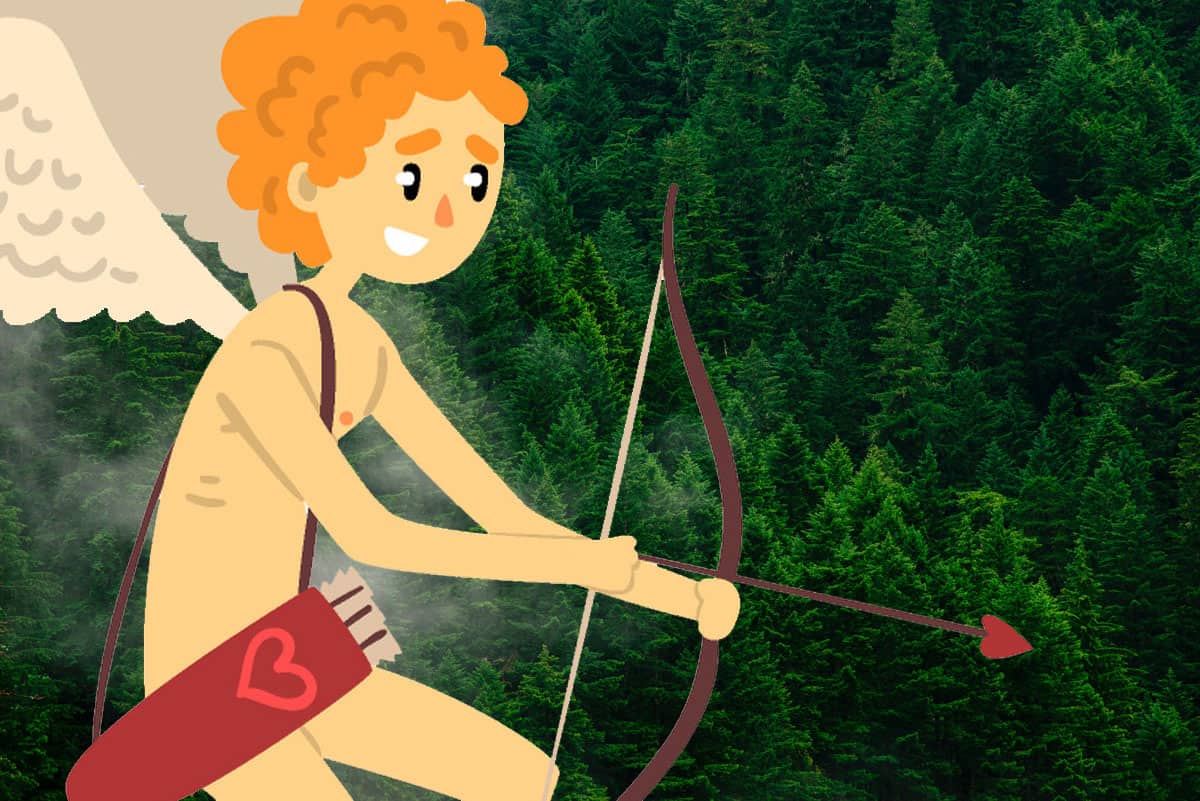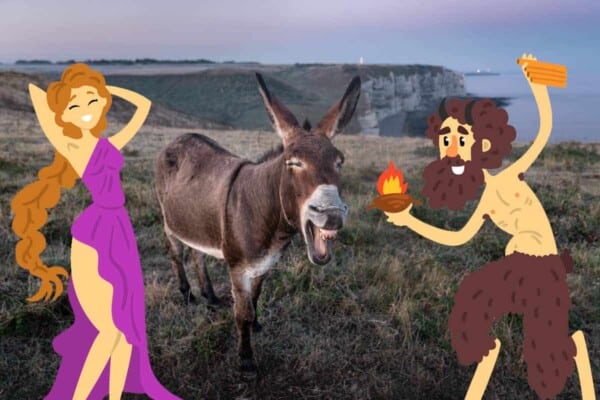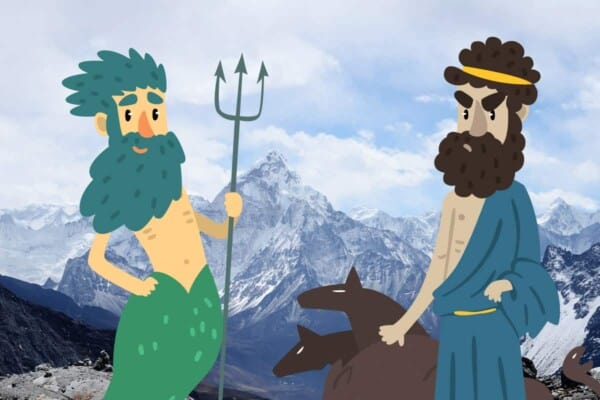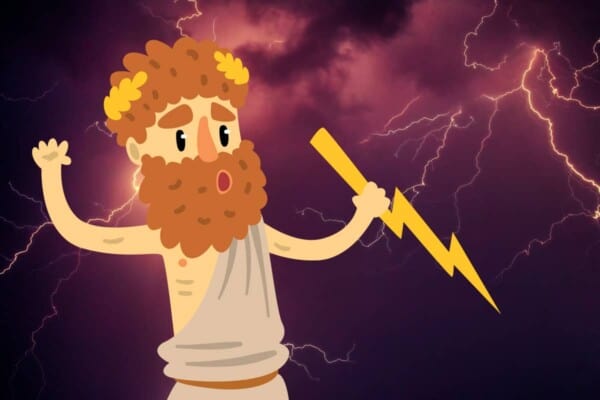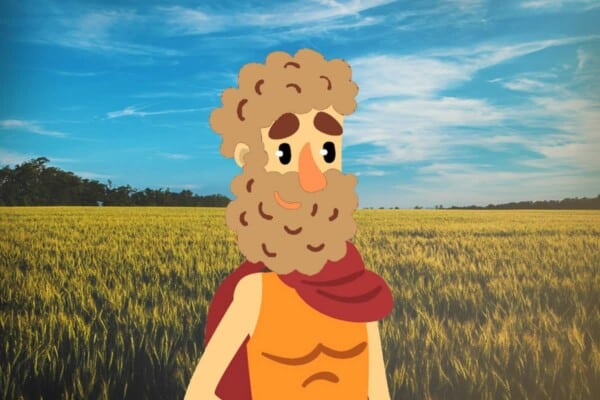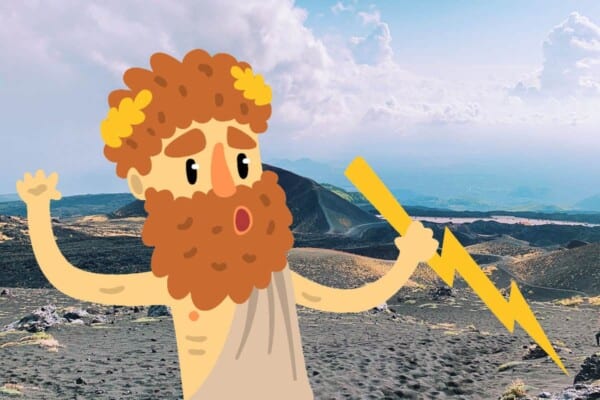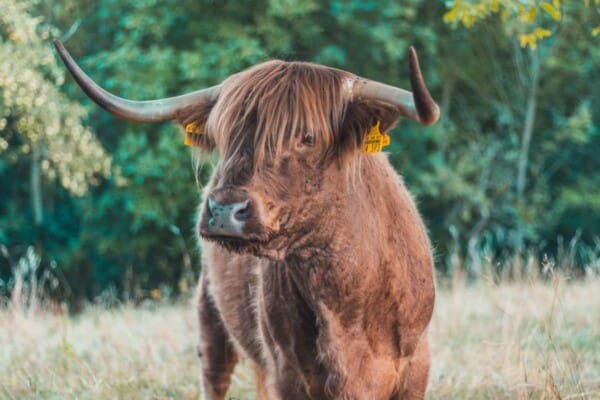Eros was an Ancient Greek god of romantic love, sex, and sexual desire. With many of his siblings, he made up a group of love gods known as the Erotes. They were companions of and usually the children of Aphrodite, though in earlier accounts Eros was a primordial god from before the world was formed.
The following facts mostly talk about Eros, son of Aphrodite, as he is the most known version. They cover his mythology, his role in Ancient Greek religion, and the important part he played in many stories of the gods of Classical Greece.
Interesting Facts About Eros
1. Eros’s parents were Aphrodite and Ares
Aphrodite, the Olympian goddess of love, was a daughter of Thalassa (the sea) and the blood of the genitals of Ouranos. Ares, the great-grandson of Ouranos, was the Olympian god of war and bloodshed. Though Aphrodite was married to Hephaestus, Ares and Aphrodite had a long-standing love affair.
2. Several of his siblings joined him in the Erotes, and each dealt with a different aspect of love
All of them except those noted were children of Aphrodite and Ares
| Name | Type of love | Role |
| Anteros | Requited love, romantic or platonic | Punishing those who scorned love |
| Eros | Sexual desire and same-sex relationships | Caused or encourage sexual desire, and served in a trio of gods representing homosexual love along with Hermes and Heracles |
| Hedylogos | Flattery and sweet words | A charioteer of Aphrodite |
| Hermaphroditos | Dual-sexes, gender identity, marital love | Originally a young man who was fused with his female lover |
| Himeros | Uncontrollable desire and unrequited love | The opposite of Anteros |
| Hymen | Marriage and weddings | Oversaw the union of bride and groom |
| Pothos | Longing and yearning | A charioteer of Aphrodite and companion of Dionysus |
3. Psyche, Eros’s consort, was mortal
Eros fell in love with her and spirited her away, but her sisters convinced her to betray him. The lovers both mourned the loss, but eventually found their way back to each other. She died, but Eros brought her back to life as the goddess of the soul.
4. Eros and Psyche had a daughter named Hedone
She was the goddess of sensuality. Her name is the root of the word hedonism. In Roman myth, she was known as Volupta, from where we get voluptuous.
5. In Roman mythology, Eros was known as Cupid
He was not the little round childish figures that came later! The cupids we think of now were a liberty taken by later artists.
6. The Erotes all had wings
They were a group of winged gods, though they were usually adult men!
7. The primordial version of Eros was either the father of all beings by parthenogenesis or the son of Nyx, the night
In the latter case, he was the fourth god after Chaos, Gaia, and Tartarus
8. Dolphins and roosters often feature in his depictions
These animals were associated with fertility and were his companions
9. Eros’s arrow could make people fall in love
Hera, queen of the gods, once plotted to make Eros shoot Medea in order to make her fall in love with the hero, Jason.
10. He was often also a god of freedom and friendship
Lacedemonians (more commonly known as Spartans) sacrificed to Eros before battle to bolster their army’s bonds.
11. His name is the source of English words relating to sex and sexuality
Most obviously he gives his name to erotic and erotica.
12. Every month he had a sacred day
Within the fertility cults which worshipped him and Aphrodite, the fourth day of the month was always sacred to Eros. It was also important to Aphrodite, Heracles, and Hermes.
13. He was a gifted artist
His prowess in the creative arts was considered profound. Eros was especially gifted on the flute.
14. Eros’s name was also one of the six types of love understood by Greek philosophers
The words and their Latin equivalents are important sources of many modern English words
| Name/Word | Type of love | Derived words in modern English |
| Agápe / Caritas | Love toward children and family, love toward god or gods | Agapism (Unrelated to the word ‘agape’) Charity |
| Éros | Sexuality and intimacy | Erotic, erotica |
| Philía | Love between friends, love between equals and communities | Bibliophile, philanthropy |
| Storgé | Affection between parents and children or older family members and younger | None |
| Philautía | Self-love. Divided into healthy and unhealthy. | See philia |
| Xenía | Hospitality, guest right, love of strangers | Xenophile, xenophobe |
15. Eros had three other full siblings from Ares and Aphrodite.
They were Harmonia, goddess of harmony, and Phobos and Deimos, personifications of fear and dread.
16. Eros (and Cupid) were often depicted with a blindfold
This was to show the blindness of love, such as in the phrase ‘love is blind’, and to emphasise how lovers often act without looking ahead.
17. Christians in the late 8th and early 9th century saw Eros or Cupid as a demon
To them, he was a lustful creature who led men and women astray with the temptation of fornication, a deadly sin.
18. Eros had a disagreement with Apollo
The two argued, and Eros shot two arrows. One was his love-arrow, with which he hit Apollo, and the other was lead. The lead arrow hit the nymph, Daphne. Apollo pursued Daphne but she did not return his love and did not wish to be ravished by him. As he tried to kiss her, Daphne prayed to her father, who turned her into a laurel tree to escape.
Final thoughts
Eros’s name lives on and shapes how we talk about sexuality and erotic desire even until this day. Although he was not an Olympian and was in fact a subordinate of the Olympian goddess of love, his direct involvement in affairs of sex show his importance in rank.
Contents
- Interesting Facts About Eros
- 1. Eros’s parents were Aphrodite and Ares
- 2. Several of his siblings joined him in the Erotes, and each dealt with a different aspect of love
- 3. Psyche, Eros’s consort, was mortal
- 4. Eros and Psyche had a daughter named Hedone
- 5. In Roman mythology, Eros was known as Cupid
- 6. The Erotes all had wings
- 7. The primordial version of Eros was either the father of all beings by parthenogenesis or the son of Nyx, the night
- 8. Dolphins and roosters often feature in his depictions
- 9. Eros’s arrow could make people fall in love
- 10. He was often also a god of freedom and friendship
- 11. His name is the source of English words relating to sex and sexuality
- 12. Every month he had a sacred day
- 13. He was a gifted artist
- 14. Eros’s name was also one of the six types of love understood by Greek philosophers
- 15. Eros had three other full siblings from Ares and Aphrodite.
- 16. Eros (and Cupid) were often depicted with a blindfold
- 17. Christians in the late 8th and early 9th century saw Eros or Cupid as a demon
- 18. Eros had a disagreement with Apollo
- Final thoughts

